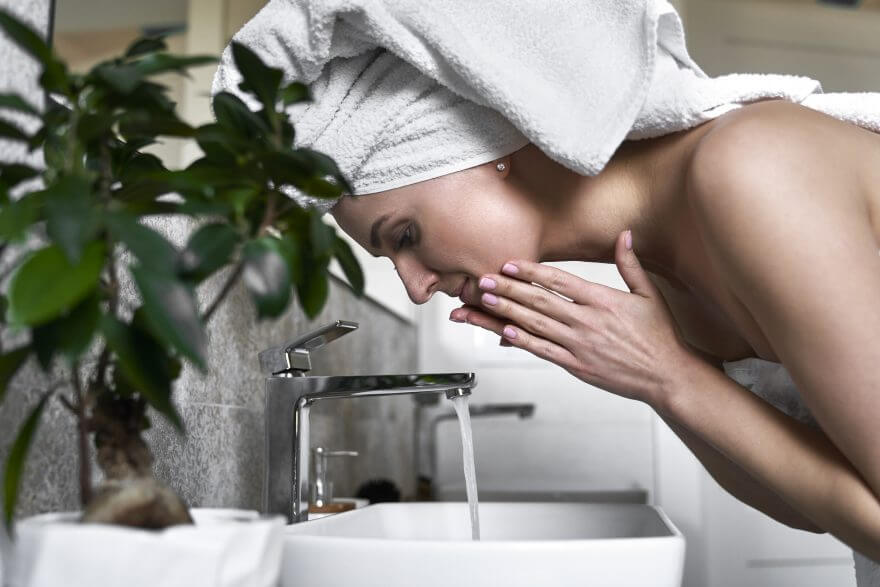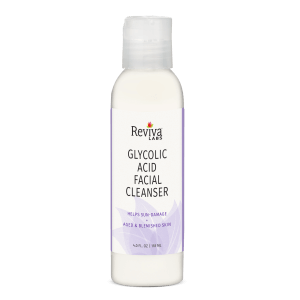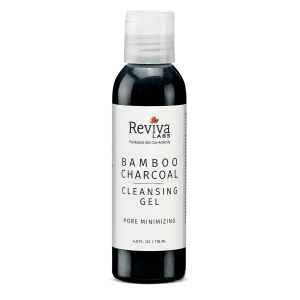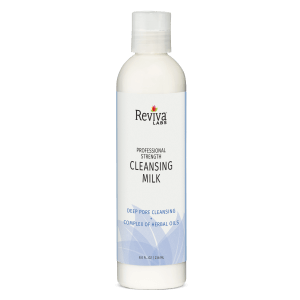Ingredients, Reviva Labs, Skin Care
Does the pH of a cleanser really Matter?
When it comes to skincare, we often focus on finding the right products for our skin type and concerns. However, there’s another crucial factor that deserves our attention: pH. The pH level of our skin and the products we use can have a significant impact on its health and appearance.
What is pH
pH stands for “potential of hydrogen” and refers to the measurement of acidity or alkalinity in a substance. The pH scale ranges from 0 to 14, with 7 being neutral. Below 7 is considered acidic, while above 7 is alkaline. Lemon juice, for example, has a pH of 2, making it highly acidic, while baking soda has a pH of 9, putting it in the alkaline range.
The pH of Skin
Our skin has a natural pH level that plays a crucial role in maintaining its health and function. On average, the pH of our skin ranges from 4.5 to 5.5, making it slightly acidic. This acidity is due to the presence of natural substances like sweat and sebum, which help create a protective barrier known as the acid mantle.
The acid mantle is like a shield that keeps our skin healthy and resilient. It consists of a combination of natural oils, sweat, and skin cells that work together to maintain the skin’s pH balance.
When the pH balance is disrupted, it can lead to various skin issues. For instance, using skincare products with a high pH can strip away the natural oils and disrupt the acid mantle, leaving the skin dry, irritated, and prone to inflammation. On the other hand, products with a low pH can help maintain the acid mantle, keeping the skin balanced and healthy.

pH of Face Cleansers: Finding the Right Balance
Cleansing is a vital step in any skincare routine as it helps remove impurities, excess oil, and makeup. However, using the wrong cleanser with an inappropriate pH level can compromise the skin’s barrier function and lead to various skin problems.
The ideal pH for face cleansers should be slightly acidic, similar to the natural pH of our skin. A pH range between 4.5 and 5.5 is considered optimal, as it helps maintain the skin’s acid mantle and ensures a gentle yet effective cleansing process. Cleansers within this pH range are less likely to disrupt the skin’s balance and cause irritation or dryness.
High pH cleansers, often alkaline in nature, can strip away the skin’s natural oils and disrupt the delicate balance of the microbiome. This can result in dryness, redness, inflammation, and even breakouts. It’s crucial to avoid cleansers with a pH above 7 to maintain healthy skin.
On the other hand, using a cleanser with a low pH offers several benefits for the skin. Low pH cleansers help maintain the skin’s natural acidity, which is essential for keeping the acid mantle intact. They are gentle on the skin, ensuring effective cleansing without causing dryness or irritation. Additionally, low pH cleansers help balance the skin’s oil production, making them suitable for all skin types, including sensitive and acne-prone skin.
Choosing the Right Cleanser for Your Skin
When selecting a face cleanser, it’s essential to consider your skin type and concerns. Here are some guidelines to help you choose the right cleanser based on pH and other factors:
Dry Skin
Look for a gentle, hydrating cleanser with a low pH to prevent further drying of the skin.
Oily Skin
Opt for a foaming cleanser with a slightly higher pH to help control oil production without stripping the skin.
Sensitive Skin
Choose a fragrance-free, hypoallergenic cleanser with a low pH to minimize the risk of irritation.
Acne-Prone Skin
Consider a cleanser with exfoliating ingredients like salicylic acid and a low pH to unclog pores and reduce breakouts.
Normal/Combination Skin
A balanced cleanser with a slightly acidic pH will work well for maintaining the skin’s natural equilibrium.
Remember to read the product labels and look for information about the pH level. Many brands now provide this information to help consumers make informed choices about their skincare products.

Sparkling Water and Skin pH: Myth or Fact?
There has been some buzz about using sparkling water as an alternative to tap water for washing the face due to its pH level. The idea behind this is that sparkling water, with its slightly acidic pH of around 5.5, is more compatible with the skin’s natural pH. However, this claim is not entirely accurate.
While sparkling water does have a lower pH compared to tap water, it typically falls within the range of pH 3 to 4, rather than the desired pH range of 4.5 to 5.5 for optimal skin health. Additionally, tap water with a neutral pH of 7 is less likely to disrupt the skin’s natural pH compared to other pH levels. Therefore, it is perfectly fine to wash your face with regular tap water without worrying about damaging your skin’s pH balance.
By understanding the importance of pH and selecting the right cleanser for your skin type, you can achieve a clean, balanced, and healthy complexion.











